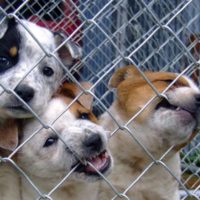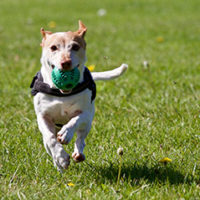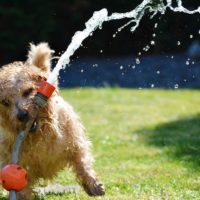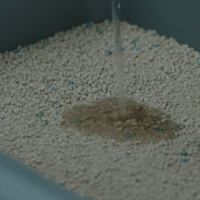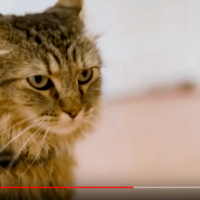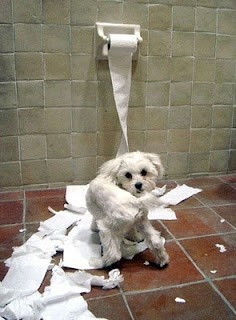Cleaning up pet toileting accidents
Tips for Cleaning up Pet Pee and Poo Toileting Problems Around Your Home
‘Accidents’ around the home need to be cleaned up thoroughly. Otherwise your cat or dog may return to this same spot each time they toilet. Try one or more of the following cleaning tips…
First have a look at why your pet may be toileting inappropriately:
Cat Toileting Problems
Dog House Training Issues
Black-light torch
It can be tricky to spot exactly where your pet has urinated. The use of a black-light ultraviolet torch, in the dark, can help you identify spots that require thorough cleaning.
Non-ammonia cleaning products
Our human emphasis is on cleanliness with strong, perfumed, often ammonia-based products. These ammonia-based cleaners may smell like urine to the feline and canine nose and they actually encourage the cat and dog back to that particular spot to relieve themselves. Without knowing it, we have actually created or encouraged the unwanted habit!
Non-perfumed cleaners
Humans often value the scent of our cleaning products. Our cats and dogs, however, do not. The smell of bleach or other strongly perfumed cleaning fluids may be discouraging your cat from using the litter tray and your dog from using areas you would like them to toilet.
Try using non-perfumed cleaners or a bicarbonate of soda solution with very hot water to clean the litter tray and the inappropriate area where your cat or dog has chosen to toilet. Otherwise, if your pet does not mind your cleaning products, continue to use them but also add an enzymatic cleaner.
Deodorizers & odour eliminators
Deodorizers are available for your cat’s litter tray. These may have the opposite of the desired effect, however, if your cat dislikes their aroma and starts to urinate and defecate outside of their litter box to avoid the scent. Odour eliminators may help encourage some cats to use their litter trays again.
Enzymatic cleaners are important for cleaning up pet toileting accidents
Usually the most successful method of cleaning your pet’s urine or faeces is to use an enzymatic cleaner. These are cleaning products that have enzymes within them. Enzymes attack and destroy the bacteria that are collecting in the waste, giving it its characteristic foul odour.
Your laundry washing powder may have enzymes within it (check the pack). You can make a solution of this and apply liberally to the affected area.. While this may be close to hand and the most economical solution, be careful that it does not remove your carpet colours or stained floorboards.
There are also commercially available products that help remove the scent. These are available at most pet specialty stores. These cleaners may need to be applied liberally to carpets and other areas soiled by your cat or dog, even between floorboards to eliminate any toilet residues.
Use of these will ensure your pet is not attracted back to these areas to toilet. Be aware, however, that your pet will now be looking for new areas to toilet so ensure you are providing these or opportunities to relieve themselves outdoors.
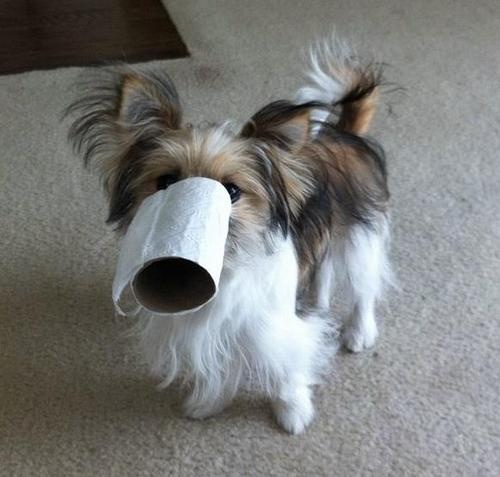
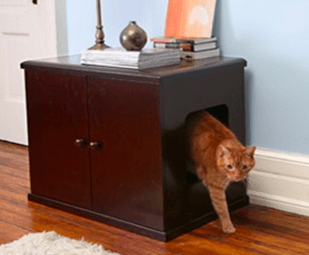
but not all cats like to use this location
Block off areas
Closing doors to the soiled areas will prevent your pet from using these as their toilet. Often they will choose little-used rooms such as a spare bedroom or under a dining table. Closing doors will keep these places clean but remember your pet will be looking for another place to toilet.
Create a living space
Placing food, treats, toys or patting and playing with your pet in the exact areas that they have been toileting will often prevent your pet soiling here. They now view this area as a living space (but they will still need another appropriate place to toilet).
Find the cause and treat this
The long term solution to toileting issues is to work out the cause and address this. This may be convenience, a preference for a particular substrate, stress or medical issues.
Find out more about cat anxiety and dog anxiety, as these are common causes of toileting incidents around the home.
For further help with cat toileting problems
Cat Toileting Problems Solved
Litter tray “accidents’ are common in cats and can be caused by many things including stress, dislike of the litter or the tray or it’s location or medical issues.Find out why your cat has toileting problems or purchase a copy of Dr Jo Righetti’s book Cat Toileting Problems Solved.
Dog problems
- Predicting the behaviour of rescue dogs. New Research to Improve Adoptability
 Predicting the behaviour of rescue dogs : It’s difficult to compare a shelter to a sofa! Are you thinking about adopting a rescue dog from a
Predicting the behaviour of rescue dogs : It’s difficult to compare a shelter to a sofa! Are you thinking about adopting a rescue dog from a - Does The Anxiety Wrap work?
 Does the Anxiety Wrap Work? Does your dog suffer from anxieties, fears or phobias? Stress is common in our pet dogs and most owners want to
Does the Anxiety Wrap Work? Does your dog suffer from anxieties, fears or phobias? Stress is common in our pet dogs and most owners want to - Top 10 Problem Pets – and Problem Pet Behaviour
 Are you frustrated, angry or puzzled y your pet’s behaviour? Here’s your guide to the top 10 problem pets and problem cat behaviour and dog behaviour…
Are you frustrated, angry or puzzled y your pet’s behaviour? Here’s your guide to the top 10 problem pets and problem cat behaviour and dog behaviour… - Road tripping with a dog with car anxiety
 If your dog is anxious while you travel, these tips, from Sarah Archer at Your Best Digs, may help… Road tripping with a dog with car
If your dog is anxious while you travel, these tips, from Sarah Archer at Your Best Digs, may help… Road tripping with a dog with car - A Day In The Life of A Pet Care Centre
 Do you ever wish that your dog was better behaved or perhaps just had more activities to occupy them? A pet care centre could be the
Do you ever wish that your dog was better behaved or perhaps just had more activities to occupy them? A pet care centre could be the
Cat problems
- Pets and water sprays: No way!
 Pets and water sprays People often tell me that they use a water spray to correct their pet’s behaviour. They say it works, as the pet
Pets and water sprays People often tell me that they use a water spray to correct their pet’s behaviour. They say it works, as the pet - Cats use of litter box is determined by sight, not scent
 Cats use of litter box determined by sight, not scent You might think your cat’s litter box is clean , even if they have already used
Cats use of litter box determined by sight, not scent You might think your cat’s litter box is clean , even if they have already used - How to Keep Pets Calm in Stressful Situations
 All pets get stressed at times and some are in a constant state of anxiety, so it helps to know how to keep pets calm in
All pets get stressed at times and some are in a constant state of anxiety, so it helps to know how to keep pets calm in - Australia’s cats kill 650 million reptiles a year!
 At Pet Problems Solved, we LOVE cats. But cats hunt, it’s inevitable. Indoors they hunt toys, food or us. Outdoors they hunt wildlife. New research, explained
At Pet Problems Solved, we LOVE cats. But cats hunt, it’s inevitable. Indoors they hunt toys, food or us. Outdoors they hunt wildlife. New research, explained - Ask Dr Jo – Your Cat Q&As (With adorable Cats to watch!)
 Ask Dr Jo – Your Cat Q&As in the Fancy Feast Lounge Enjoy our cat videos, and get your feline questions answered, in my series of
Ask Dr Jo – Your Cat Q&As in the Fancy Feast Lounge Enjoy our cat videos, and get your feline questions answered, in my series of
- Pets and water sprays: No way!Pets and water sprays People often tell me that they use a water spray to correct their pet’s behaviour. They say it works, as
- Cats use of litter box is determined by sight, not scentCats use of litter box determined by sight, not scent You might think your cat’s litter box is clean , even if they have
- How to Keep Pets Calm in Stressful SituationsAll pets get stressed at times and some are in a constant state of anxiety, so it helps to know how to keep pets
- Australia’s cats kill 650 million reptiles a year!At Pet Problems Solved, we LOVE cats. But cats hunt, it’s inevitable. Indoors they hunt toys, food or us. Outdoors they hunt wildlife. New
- Ask Dr Jo – Your Cat Q&As (With adorable Cats to watch!)Ask Dr Jo – Your Cat Q&As in the Fancy Feast Lounge Enjoy our cat videos, and get your feline questions answered, in my


